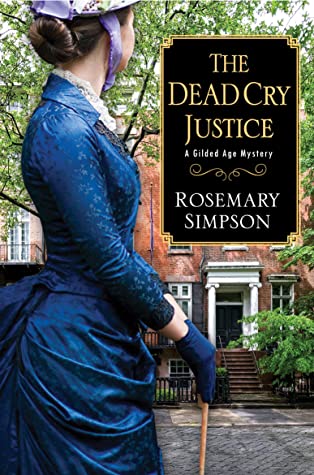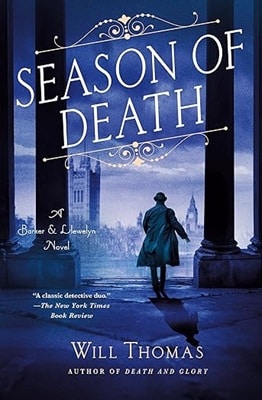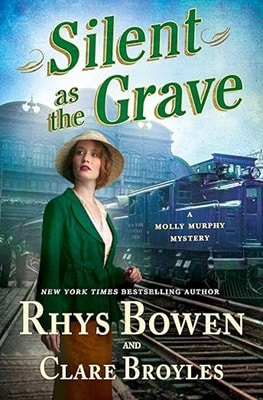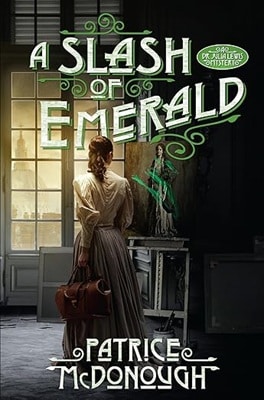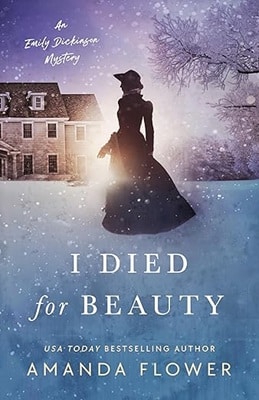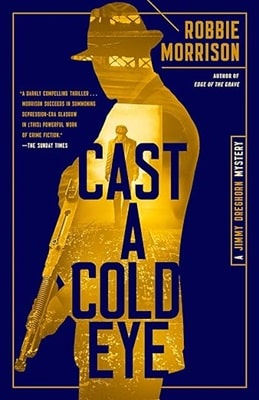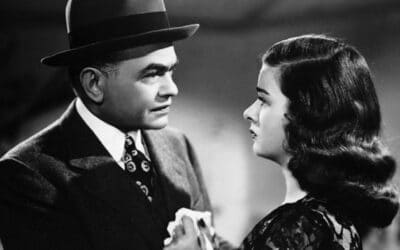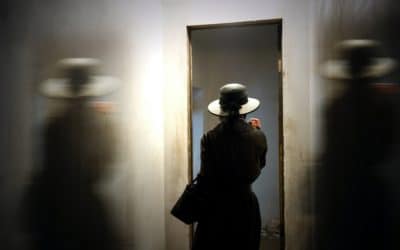
Q&A
Rosemary Simpson’s What the Dead Leave Behind is set in Gilded Age New York where the Great Blizzard of 1888 brings both disaster and independence to her wealthy and unconventional heroine. Lies that Comfort and Betray is the second in the Gilded Age Mystery series, to be followed by Let the Dead Keep Their Secrets
Rosemary is also the author of two stand-alone historical novels, The Seven Hills of Paradise and Dreams and Shadows.
She is a member of Sisters in Crime, International Thriller Writers, and the Historical Novel Society. Educated in France and the United States, she now lives near Tucson, Arizona.
Interview by Elise Cooper
Q. How did you get the idea for the story?
Rosemary: Each one of my Gilded Age Mystery books has a social setting, murder, and the two main characters. In this book it was the social exploitation of girls and women. It was a topic that needed to be addressed. The deeper I got into my research I realized there are a lot of parallels of what is happening now. At the time of my research Jeffrey Epstein was in all the papers.
Q. What can you say about the abuse?
Rosemary: It was horrific back then. The girls felt homeless. It was emotional and physical. The girls were bleached, tattooed, made to take arsenic and lead, starved, drugged, and beaten. Parts of this are true today. There was a great deal of abuse. Usually, it was the women themselves who were blamed for the sexual exploitation. The clients were rarely blamed. I kept looking and looking for major outcries against this. No one wanted to admit that this horrible issue could exist. I wanted it to be believable and to be realistic in the historical context.
Q. So people used to take lead and arsenic?
Rosemary: Yes. It was done for hundreds of years to whiten the skin. It was a lead paste. It also did damage to the brain and other parts of the body. The arsenic was a very small amount used in cremes.
Q. You also have a quote about criminals. Tell us about how that’s relevant today.
Rosemary: You are referring to this one, “Criminals arrested should be detained, but walked free.” This book takes place before Theodore Roosevelt became the police commissioner. Before him, the NYC police department was tremendously corrupt. Until Roosevelt came along there were not many who wanted to clean up the corruptness. People could pay to walk away after they committed a crime. What is happening today, with criminals getting out, is a replay of what has already happened, many and many times.
Q. Some of this story reminded me of the movie, Oliver. What does that tell us about the period?
Rosemary: There were a lot of orphanages in NYC. They meant well and many were reformers. There was something associated with being an orphan as if it were the child’s fault. In the absence of stern parental control there was organized institutional control. Children were not assumed to be innocent, but the thought pattern was they tried to get away with everything unless there was a tight hold on them. A lot of the orphanages existed because of the donations. They were very grim. As soon as the orphans got to be a certain age, they were shown the door.
Q. What is the role of the dolls?
Rosemary: Young women were being traumatized and deprived of their basic humanity. They were turned into objects. The porcelain hand-painted bisque dolls are now antiques and even back then were very valuable. The best ones did come from France. They were so beautiful they were collector’s items and usually were not played with. When I was a child, about five, I got a gorgeous doll from my French aunt. It was in a huge red and gold box, wrapped in huge red ribbon. I was afraid to take it out of the box for fear I might drop it. After my aunt left, I took it out of the box. It was gorgeous.
Q. Did the All-American Doll Shop influence you?
Rosemary: I bought some of these dolls. But the idea was to make the dolls lifelike. But I was reversing it. I was making the real girls look doll-like. I only remembered these dolls during the rewrites. In my story it was a way of depriving the exploited girls to be human. Just as today, with sex trafficking, these girls are treated as objects.
Q. Were women really admitted to law schools during the 1890s?
Rosemary: Most of the women were working in a husband’s law firm or writing wills/trusts. They were not arguing in full court before a jury. My character Prudence wants to defend someone in a court. Society is beginning to open up to achieve some sort of equality.
Q. How would you describe the young brother Zander who tried to save his sister from exploitation?
Rosemary: An Oliver Twist kind of character: Resilient, crafty, quick on his feet, smart, does not give up, and very loveable. He bonded with his dog Blossom. An unquestioning love and loyalty. He is also protective, caring, and kind. He realizes to save his sister he has to manipulate society.
Q. What’s next?
Rosemary: It will be out this time next year and is titled, Death at The Falls. It takes place at Niagara Falls. Prudence has passed the bar, but no one will hire her. She and her partner Geoffrey go to Niagara Falls to help her aunt’s friend who is accused of murder. The social aspect is the push pull between private exploitation of the Falls and the public effort to preserve the natural beauty of the falls.
Review by Elise Cooper
The Dead Cry Justice by Rosemary Simpson always involves a mystery, returning characters, and a social issue during the Gilded Age. This historical novel delves into a very tough and disturbing topic. But Simpson is such a gifted author and writes in a manner that does not go over the top. She realizes a line should not be crossed, leaving the subject matter up to the reader’s imagination.
The story opens with the main character, Prudence MacKenzie, heiress turned sleuth with her partner, Geoffrey Hunter, contemplating if she should accept the offer to attend NYU’s law school. It is now 1890 and women are making strides, but she is not sure how she will be accepted among the students and professors.
While weighing her decision a street urchin steals her sandwich. A chase ensues leading her to a badly beaten girl. The girl’s eyelashes and eyebrows have been replaced with tattoos, her skin is bleached artificially white, and she has been repeatedly raped. A Quaker refuge for the poor agrees to care for the boy and girl, both to traumatized to speak. Somehow, they slip out. Prudence, with the help of Geoffrey and some other contacts, are determined to find the children. They visit orphanages, brothels, a photographer, newspaper journalist, and a house of dolls. Their only clue is a mysterious porcelain doll that oddly resembles the missing girl. To their shock, they discover other young girls in the same situation. They now have a race against time to find the children and the perpetrators before it is too late.
This is an important issue to bring front and center since sex trafficking is still present today with very little coverage or outcry as it was in the 1890s. Readers will understand how Simpson brings to life the Gilded Age in New York City through detailed descriptions, real-life people such as Jay Gould, Jacob Riis, and Nellie Bly, and a riveting mystery.
Rosemary Simpson's Latest
The Dead Cry Justice
May 1890: As NYU Law School finally agrees to admit female law students, Judge MacKenzie’s daughter Prudence weighs her choices carefully. Chief among her concerns is how her decision would affect the Hunter and MacKenzie Investigative Law agency and her professional and personal relationship with the partner who is currently recuperating from a near fatal shooting.
But an even more pressing issue presents itself in the form of a street urchin, whose act of petty theft inadvertently leads Prudence to a badly beaten girl he is protecting. Fearing for the girl’s life, Prudence rushes her to the Friends Refuge for the Sick Poor, run by the compassionate Charity Sloan. When the boy and girl slip out of their care and run away, Prudence suspects they are fleeing a dangerous predator and is desperate to find them.
Aided by the photographer and social reformer Jacob Riis and the famous journalist Nellie Bly, Prudence and Geoffrey scour the tenements and brothels of Five Points. Their only clue is a mysterious doll with an odd resemblance to the missing girl. But as the destitute orphans they encounter whisper the nickname of the killer who stalks them—Il diavolo—Prudence and Geoffrey must race against time to find the missing children before their merciless enemies do.
More Historical Mysteries
Advertisement
Historical Mystery Features
Mysteries Set in the 1940s
This tumultuous decade served as a fertile ground for mysteries
Historical Psychological Thrillers
How historical psychological thrillers stack up against psychological thrillers
Is it Historical Fiction?
How long ago does history start?

